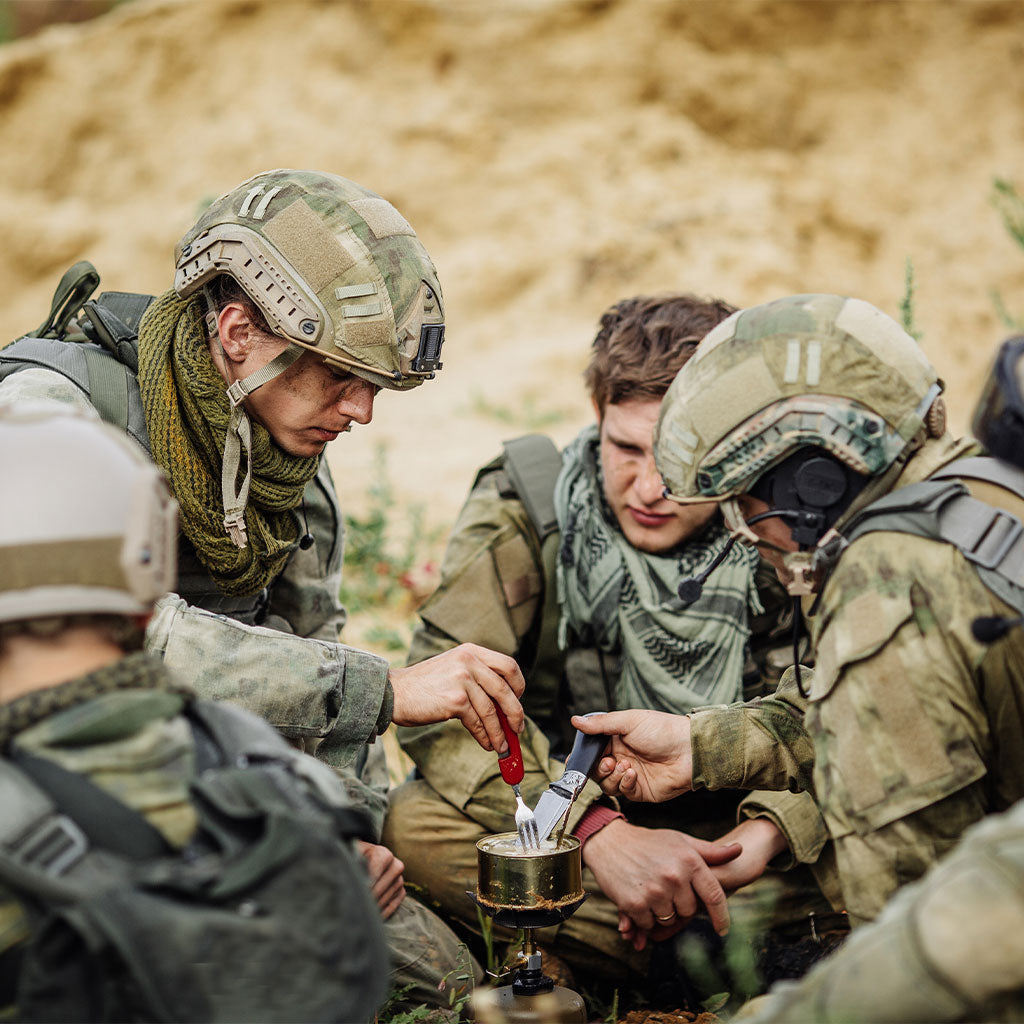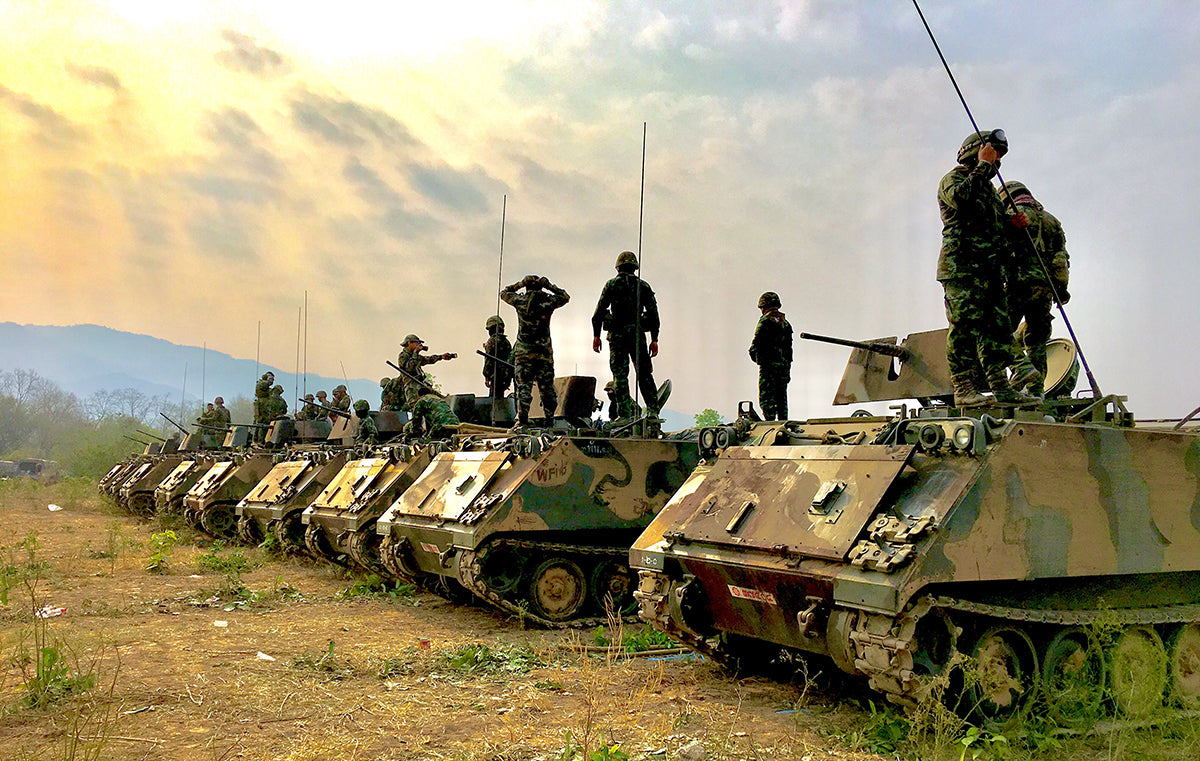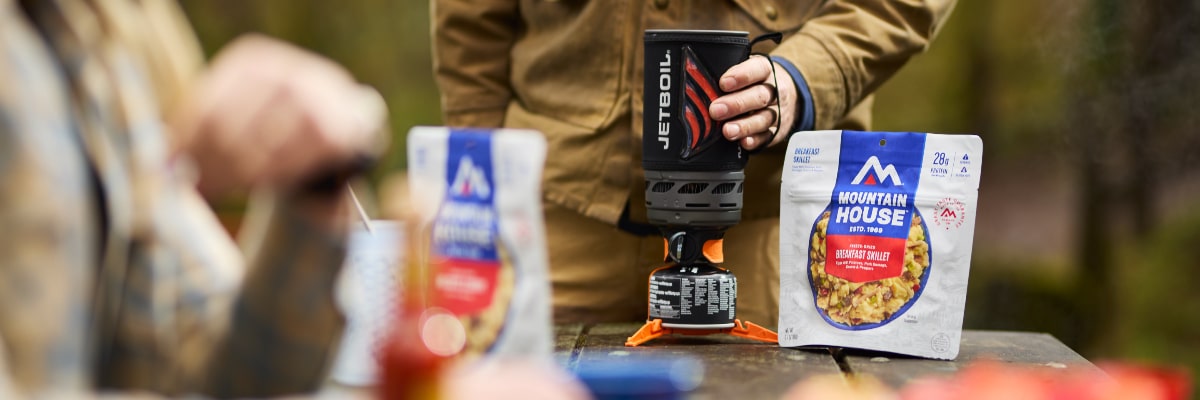Inspired for an Adventure? Check out Beef Stroganoff - Pouch and Beef Stew - Pouch
Free Ground Shipping On All Orders
Over 2,100 Reviews
Add description, images, menus and links to your mega menu
A column with no settings can be used as a spacer
Link to your collections, sales and even external links
Add up to five columns
Add description, images, menus and links to your mega menu
A column with no settings can be used as a spacer
Link to your collections, sales and even external links
Add up to five columns


Troops in the field are hungry human beings, and if they aren't provided with sustainable, nutrient-dense meals, they cannot operate at their peak in order to best serve the country. That said, historically-speaking, from WWI to Vietnam, US troops have served on paltry and unpalatable rations, which do little for satiating hunger and less for boosting morale. Military rations have significantly improved since the Vietnam era, as the Department of Defense stepped up to ensure troops are better fed in order to better serve.
There are many different ration types, varying between countries and their respective militaries.

Garrison Rations
Soldiers have been supplied rations to sustain them in the field since the 19th century. Rations given on-site where troops are stationed are often referred to as garrison rations. Generally, these rations haven’t met high standards for nutrition (or taste!), instead they were thought of necessary for pure sustenance. In the 1800s British Royal Army troops were supplied one pound of bread, and three-quarters pounds of beef each day. And, troops were only fed twice a day–once at 7:30am, and again at 12:30pm.
Field Rations
When troops strike out on a mission or were moving by foot, to another base, they were given field rations, or combat rations. Field rations were easier to carry, and focused on being calorie-dense to meet the demands of constant physical activity. These rations required little to no preparation, so items like crackers, canned fish, and energy bars were popular in these packages.
Spirit Ration
Not only were soldiers given rations for food, but also rations for spirits in the late 1700s and early 1800s. Soldiers were provided with Rum, Whiskey, or Brandy. Spirit rations were discontinued in 1832 and were replaced with a coffee ration. And then not long after, in 1846, the spirit ration was reinstated until 1865.
Iron Ration
In World War I, the Iron Ration was carried by soldiers into the field in case they weren’t in a position to receive a resupply. The ration contents varied from country to country. For American soldiers, the Iron Ration consisted of three 3-oz beef cakes, chocolate, and salt and pepper. These rations lasted until the end of the first World War and were replaced by the Reserve Ration going forward.
Trench Ration
Trench Rations were short-lived due to their weighty nature. Hauled in heavy canvas totes, the limited menu consisted of canned protein like salmon, sardines, and corned beef. Soldiers quickly grew tired of the Trench Ration, which only lasted four years, and the weight proved them to be impractical.
Reserve Ration
In response to soldiers being away from the field kitchen for extended periods of time, and wanting more than tinned meat and fish, Reserve Rations were created. These rations consisted of either a pound of bacon or a pound of other canned meat, usually corned beef. Additionally, smaller portions of bread, coffee, sugar, salt, and tobacco were included in these rations. Later, canned pork and beans were substituted for bacon or corned beef.
A, B, C, D Rations
After World War I, military rations were condensed into four rations: A, B, C, and D. The military looked at what rations did and didn’t work over the previous years and standardized the process. A-Rations are used whenever fresh produce and meat was readily available, these were (naturally) the healthiest and tastiest of the rations. B-Rations are for when making or obtaining fresh ingredients are not an option, and refrigeration not required. They’re cooked in a field kitchen and then packaged for the field. C-Rations are pre-cooked, canned meals that soldiers can take into the field and without worrying about shelf life or refrigeration. Finally, D-Rations are emergency rations, and generally consist of a dense chocolate bar with additional nutrients and ingredients to sustain soldiers in the field.
MRE Meals
Finally, military MREs, or Meal, Ready to Eat. In 1963, the Department of Defense began commercial production and research of MREs to replace field rations. These meals would be lightweight and easy to make (usually, just add water or eat as-is).
Mountain House (originally part of the parent company Oregon Freeze Dry or OFD), started supplying rations to the military during the Vietnam War in 1966. At the time, OFD was the largest freeze-dry operation in the country, and shortly thereafter, REI struck up a partnership in order to offer the same taste and convenience of high quality freeze-dried meals to backpackers and campers, as well as continuing to feed US troops.

MRE vs Freeze-Dried Food

What Ingredients Are in Mountain House Freeze-Dried Meals?


Stay Hungry for Adventure
Sign Up for Delicious Outdoor Meals & Exclusive Offers!
By clicking ‘Join Now’, I agree to the Terms of Service and Privacy Policy.


Join the adventure
©2025 Mountain House — All Rights Reserved.
Your Cart is Empty
Continue ShoppingYour Cart
Subtotal
$0.00
EXPRESS PAYMENT METHODS AVAILABLE IN CHECKOUT
Taxes and Shipping Calculated at Checkout
Your ExpertVoice deal.
$[Deal Price]
$[Original Price]
Discount applied at checkout.
On sale now — lower than your ExpertVoice discount.
Not eligible for ExpertVoice discount.














